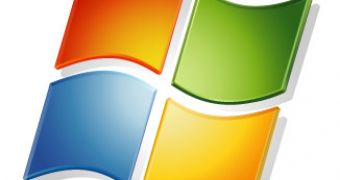With Windows 7, Microsoft is not only working to steer away from the mistakes made with Windows Vista, but also to move on territories where the successor of Windows XP has failed to gain a consistent level of traction. Even with 180 million Vista licenses sold, the operating system has failed to convince the vast majority of corporate customers to make the jump. This is why Microsoft is building Windows 7 as enterprise-friendly as possible, delivering devices profile for web services, virtualization, and network optimization for branch offices and additional features tailored to corporate IT infrastructures.
According to a recent survey put together by the Corporate IT Forum, a total of 43 organizations indicated that no less than 30% are investigating or analyzing Windows 7 in comparison to just 14% that are doing the same for Vista. Moreover, 35% of the companies surveyed indicated zero interest in Windows Vista with only 5% in the pilot phase of deployment, with 2% using the platform in an isolated environment, and just 4% exploiting it. By comparison, 58% of participants indicated that they are exploiting Windows XP with another 12% in the developing/pilot stage.
The past week, Microsoft Chief Executive Steve Ballmer toned down the company's idea related to migrations to Windows Vista, and advised that in certain contexts it would make sense to skip XP's successor and upgrade directly to Windows 7. Ballmer explained that the Windows upgrade should be synchronized with each company's specific upgrade cycle. In scenarios in which the Vista upgrade process would be ongoing while Windows 7 will be released, Ballmer indicated that corporate customers should jump directly to the next iteration of the Windows client.
In this regard, the Redmond giant is offering increasing proof that Windows 7 will go beyond Vista in terms of the focus on enterprise environments. New sessions details published for the Windows Hardware Engineering Conference 2008 in November illustrate the tailoring of Windows 7 to enterprise computing.
Windows Devices Profile for Web Services in Windows 7 - “Network printers, scanners, projectors, and desktop and mobile systems are leading the way to the future of Web Services and Service Oriented Architecture-connected devices across the enterprise. Networked devices are shifting to Web Services to support complex use scenarios and to address the need for security and robustness in the enterprise and vertical markets. This session discusses the Devices Profile for Web Services (DPWS) in Windows 7, which enables new, richer, and more secure user scenarios for the mobile workforce. The session also highlights the various device classes in Windows 7 that can support the DPWS protocol”.
Windows Presentation Virtualization - “This session discusses Microsoft's continued investment in Windows remoting features that empower the enterprise mobile workforce in the next release of Windows and beyond. We’ll covers how these features in Windows 7 and Windows Server 2008 R2 will enhance the user computing experience and how applications can integrate well with core remoting infrastructure services to provide on-the-go users with rich software and device experience from anywhere with Internet access”.
Windows 7 Network Optimization for Branch Offices - “This chalk-talk discusses details of new capabilities in Windows 7 that reduce wide area networking link usage and provide the potential reduction in total cost of ownership (TCO) by reducing WAN link usage, providing faster downloads in the branch office, and requiring no networking infrastructure changes”.
At the end of the past week, Microsoft confirmed that it was extending the lifetime of Windows XP by offering an additional six months of downgrade rights with Windows Vista licenses for corporate customers. Vista to XP downgrades will now be performed until July 31, 2009.

 14 DAY TRIAL //
14 DAY TRIAL //